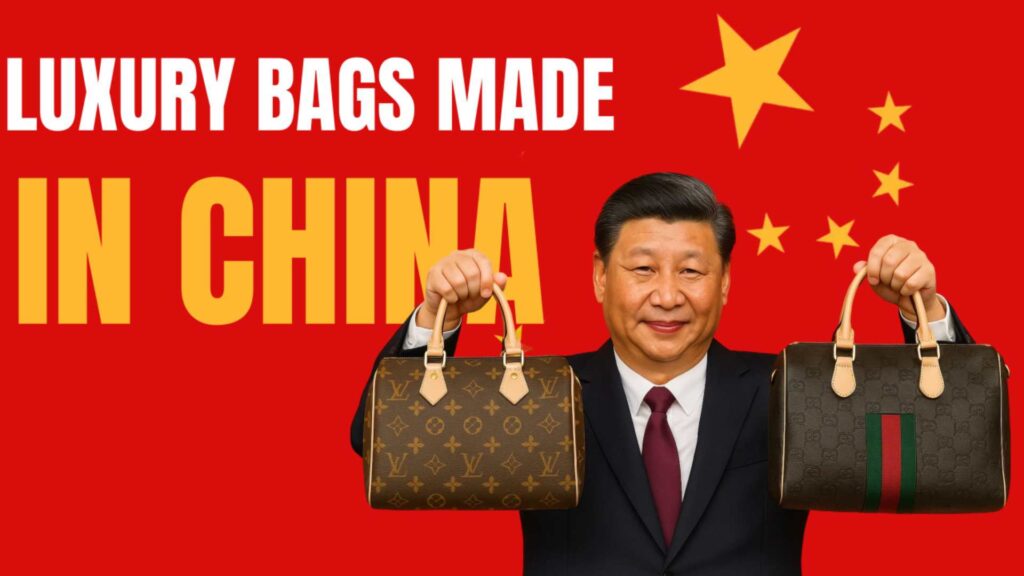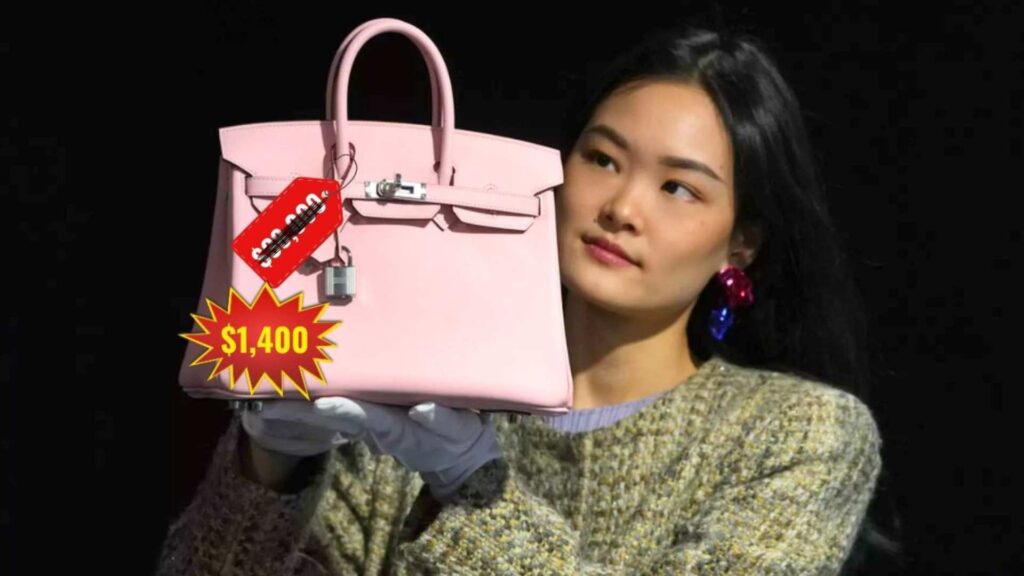Luxury brands like Louis Vuitton, Chanel, Gucci, and Dior have become symbols of success, status, and sometimes, even self-worth. People save up for months, sometimes years, to get their hands on that one “dream” item: a logo-covered bag, a belt, or sleek sunglasses. But here’s a truth most people don’t talk about: many of these luxury goods are built on illusion. And some people who’ve worked behind the scenes, like in Chinese factories and warehouses, are finally pulling the curtain back on what these expensive luxury goods are made of. They’re revealing something hard to ignore; maybe we’ve all been getting scammed.
Let’s explore the history of some of these luxury brands, how they create hype, what is really going on in Chinese warehouses, and, most importantly, how you can spot the markup illusion and avoid falling into the luxury trap.
How Luxury Brands Got Their Start (and Why It Matters)
To understand the hype around expensive luxury goods, it helps to know where they came from.
Louis Vuitton started in the mid-1800s, not as a high-fashion icon, but as a trunk maker. They made travel trunks for wealthy clients. Over time, the company expanded, added the now-famous monogram, and leaned heavily into exclusivity.
Gucci has a similar story. It began in Florence, Italy, making leather goods for horse riders and wealthy travelers. And today, both brands are global giants with products that can cost thousands of dollars, sometimes for items as simple as cotton t-shirts or baseball caps.
But here’s what’s changed: the actual craftsmanship behind many of these items doesn’t always match the luxury image anymore. As production has scaled, much of it has moved to China and Southeast Asia, just like most other mass-produced consumer products.
Now here’s where things get interesting.
The Viral Chinese Warehouse Videos That Changed Everything
In several viral social media posts, you’ve probably seen at least one video like this: A creator walks through a massive warehouse in China, filled with shelves stacked high with high-end luxury lookalikes, some with logos and some without. They explain how these “luxury” goods are often produced; they zoom in on the stitching, zippers, tags, and packaging. What’s shocking is that these items usually come from the same regions and factories and are sometimes made by the same workers as the ones making “authentic” goods for top fashion houses.

One TikToker showed a warehouse selling handbags nearly identical to Gucci’s $2,500 Dionysus bag for less than $50. Another user explained how “originals” and “replicas” are sometimes produced side-by-side, with the only difference being which market they’re sent to and what label is attached.
Some of these items are called “1:1s” or “mirror copies” because they’re that close to the real thing. The only difference? One gets a logo slapped on and shipped to a fancy storefront in Paris or New York—and the price gets multiplied by 10, 20, or even 100 times. Plus, many customers can’t even tell the difference.
However, people are now realizing that the price tags on these goods aren’t based on the quality of the product but on branding, storytelling, and artificial scarcity.
So, here’s the takeaway: Just because it has a logo doesn’t mean it’s worth the price.
ALSO READ: 7 Fashion Trends Poised to Dominate 2025
The Psychology Behind Expensive Luxury Goods and How It Tricks You
Most luxury goods are expensive not because they cost more to make, but because of branding. That means you’re paying thousands of dollars for how a product makes you feel, not necessarily what it’s made from.
Let’s be real. People buy luxury items because of how they feel or how they make others see them. Luxury brands are experts at marketing status. They’ve built empires on making you feel like you’ll be more respected, admired, or desirable just by wearing their logo.
This is called ‘aspirational branding.’ It’s not about the product; it’s about the ‘dream.’ And that dream is carefully controlled by limited releases, celebrity partnerships, and high-end stores that make you feel like you’re stepping into an exclusive world.
Let’s break it down. A regular leather bag may cost $100 to manufacture. Now, attach an “LV” or “Gucci” logo on it, toss it in a fancy box, and sell it in a boutique with marble floors, and suddenly it’s worth $2,400? That’s not better quality; it’s clever marketing.
This is what the creators of TikTok and X are trying to show. They’re saying, “You’re paying for the brand story, not the product.” The design, stitching, and materials often come from the same suppliers as “non-luxury” goods. You’re paying extra to show others that you could afford it, and then maybe you couldn’t.
And guess what? Brands know this. They thrive on the idea that exclusivity equals desire. But if the only thing exclusive about your $1,200 sneakers is the logo, is it worth it?
Once you realize it’s all designed to create ‘Fear of Missing Out’ and social pressure, you’ll start seeing things differently.
ALSO READ: 2025’s Top 8 Fashion and Beauty Trends, According to Pinterest
Spot the Markup Illusion: What You Should Do Instead
To be factual, a $1,200 designer bag doesn’t cost anywhere near $1,200 to make. Most of that price is markup, money spent on marketing, celebrity endorsements, retail rent, and profit margins.
Here’s how to avoid falling into the luxury pricing trap:
1. Think Value, Not Logo
Before buying, ask yourself: What am I paying for? Is it the material, the fancy box, the build quality, or just the name? If the same stitching and leather can be found on a $100 bag, is it worth spending ten times more?

2. Research the Product Origin
Look up where the item is made. Many “Made in Italy” or “Made in France” tags are misleading. Only the final stitching might happen there, while 90% of the work is done in lower-cost regions.
3. Set a Rule: Cost-per-Use
One helpful tip: calculate how often you’ll use the item vs. how much it costs. If you’re going to wear a $700 pair of shoes twice a year, that’s $350 per wear. Does that make sense?
4. Support Small, High-Quality Brands
Plenty of smaller or local brands make high-quality goods without the markup. Look for artisans, leather workers, or sustainable brands focusing on craft, not just clout.
Note that this isn’t about shaming anyone who likes designer stuff. If you genuinely love a brand’s design, craftsmanship, or history, that’s your choice. But the key here is intentional spending.
Being smart with your money doesn’t mean being cheap. It means choosing value over vanity. And if you really want to look stylish or express yourself, hundreds of independent designers or small brands make amazing pieces without the luxury markup.
So next time you feel tempted to spend half your rent on a bag, stop! Ask questions, do some digging, and be a smart shopper. Because luxury doesn’t come from a logo; it comes from knowing your worth and spending wisely.
